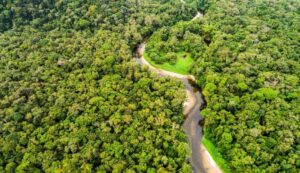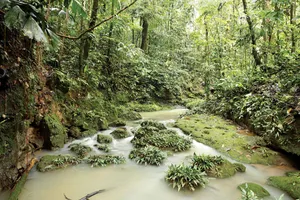Amazon Rainforest: A Vital Ecosystem Under Threat

The Amazon Rainforest, often referred to as the “lungs of the Earth,” spans over 5.5 million square kilometers across nine South American countries, with the largest portion located in Brazil. It is the largest tropical rainforest in the world and plays a crucial role in regulating the planet’s climate by absorbing massive amounts of carbon dioxide and producing oxygen. In Bangladesh there is a Mangrove Forest called Sundarbans. The forest is full of mystery.
Biodiversity Hotspot Of The Amazon Rainforest

Home to over 3 million species of plants and animals and around 400 billion individual trees, the Amazon Rainforest is one of the most biodiverse places on Earth. Iconic species such as jaguars, sloths, toucans, and pink river dolphins thrive here alongside countless insects, amphibians, and rare flora.
Indigenous Communities Of The Amazon Rainforest
The forest is not only a haven for wildlife but also home to over 400 indigenous tribes, many of whom have lived sustainably within its ecosystem for thousands of years. These communities possess deep knowledge of the forest’s medicinal plants and ecological patterns.
Environmental Importance
Beyond biodiversity, the Amazon is critical for global ecological balance. It helps stabilize rainfall patterns across the Americas and influences weather systems worldwide. Its vast trees store immense amounts of carbon, making it a key buffer against climate change.
Growing Threats
Despite its importance, the Amazon faces increasing threats from deforestation, illegal logging, mining, agriculture, and climate change. Satellite images show large-scale tree loss, and scientists warn that continued destruction could push the forest past a tipping point, turning it into a savanna and releasing vast amounts of carbon into the atmosphere.
A Call to Action
Protecting the Amazon requires coordinated global efforts, including stronger environmental policies, sustainable development initiatives, and support for indigenous rights. The future of the Amazon is not just a regional concern—it is a global imperative.
